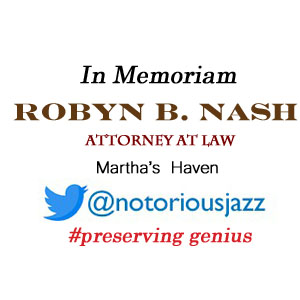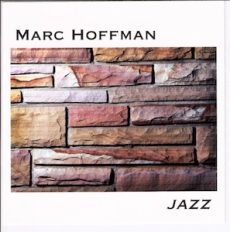
Daily Dose Of Jazz…
Marc Hoffman was born April 16, 1961 in Salisbury, North Carolina. He attended the North Carolina School of the Arts and received a degree in composition. He continued his education at The Dartington International Summer School of Music in Devon, England then studied film composition at the University of Southern California. He studied with David Ott, Sherwood Shaffer, Leo Arnaud and Neil Hefti.
Up until the early 1990s Hoffman wrote concert music, music for theater, pop, Christian music and film composition. Then he focused his attention on jazz and began writing original compositions, both instrumental and vocal, creating his own arrangements of jazz standards. Establishing his own label, Virillion Music, he recorded Long Way Home in 2003 followed by his sophomore album Christmas Time. In 2010 he released Curioso of all-original jazz.
As an educator and author he teaches and lectures on classical, pop and film music and has published two books. He also is an instructor of piano, composition, and voice at Bold Music in the Charlotte, NC area.
Pianist, composer and vocalist Marc Hoffman continues to write concert music, instrumental and vocal jazz pieces, film scores, as well as performing works solo, or with his trio, quartet or quintet and with four- or five-piece bands in a variety of venues.
More Posts: bandleader,composer,history,instrumental,jazz,music,piano,vocal
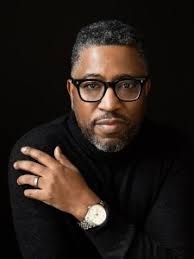
Jazz Poems
LEAVING SATURN
Sun Ra & His Year 2000 Myth Science
Arkestra at Grendel’s Lair Cabaret, 1986
Skyrocketed—
My eyes dilate old
Copper pennies.
Effortlessly, I play
*
Manifesto of the One
Stringed Harp. Only
This time I’m washed
Ashore, shipwrecked
*
In Birmingham.
My black porcelain
Fingers, my sole
Possession. So I
*
Hammer out
Equations for
A New Thing
Ogommetelli.
*
Ovid & Homer
Behind me, I toss
Apple peelings in
The air & half-hear
*
Brush strokes,the up
Kick of autumn
Leaves, the Arkestra
Laying down for
*
New dimensions,
I could be at Berkeley
Teaching a course—
Fixin’s How to Dress
*
Myth or Generations
Spaceships in Harlem
Instead, vibes from Chi-
Town, must be Fletcher’s
*
Big Band Music—oh,
My brother, the wind—
I know this life is
Only a circus. I’m
*
Brushed aside: a naïf,
A charlatan, too avant-
Garde. Satellite music for
A futuristic tent, says
*
One critic. Heartbreak
In outer space, says
Another, —lunar
Dust on the brain.
*
I head to New York
New York loves
A spectacle wet pain
Of cement, sweet
*
Scent of gulls swirling
Between skyscrapers
So tall, looks like war
If what I’m told is true
*
Mars is dying, it’s after
The end of the world.
So, here I am,
In Philadelphia,
*
Death’s headquarters,
Here to save the cosmos,
Here to dance in a bed
Of living gravestones.
MAJOR JACKSON
from Jazz Poems ~ Selected and Edited by Kevin Young
More Posts: book,classic,collectible,history,jazz,library,poet

Daily Dose Of Jazz…
Matt Lavelle was born on April 11, 1970 in Paterson, New Jersey and began his music career with Hildred Humphries, a swing era veteran who played with Count Basie and Billie Holiday.
Playing in ensembles led by Sabir Mateen since 2002, three years later Matt began study with Ornette Coleman. He has been a member of the Bern Nix Quartet since 2010 and recorded with Giuseppi Logan the same year.
In 2011 he created the 12 Houses Orchestra. Lavelle is also a visual artist inspired by his Grandfather Fritz Kluber. He is author of the Substack No Sound Left Behind. Matt published a book titled New York City Subway Drama and Beyond, in 2011. In 2013 he published a short story titled The Jazz Musician’s Tarot Deck.
He has recorded nineteen albums as a leader, and another forty-five as a sideman with Nix and Logan as well as Sumari, Eye Contact, Daniel Carter, Bern Nix, Giuseppi Logan, Matana Roberts, William Hooker, Francois Grillot, Steve Swell, Sabir Mateen, Ras Moshe, Assif Tsahar, William Parker, Charles Waters, Barry Chabala, Earth People, Allen Lowe, D3, Julie Lyon, Tom Cabrera, The Cooperative Sound, Stars Like Fleas, Eric Plaks, and Pete Dennis.
Trumpeter Matt Lavelle, who also plays flugelhorn, alto and bass clarinet, continues to perform, record and tour.
More Posts: author,bandleader,clarinet,flugelhorn,history,instrumental,jazz,music,trumpet
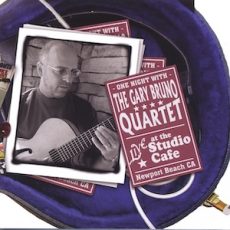
Daily Dose Of Jazz…
Gary Bruno was born in New Jersey on March 26, 1962. Showing an interest in music at the age of five he began learning drums and two yers later started studying guitar. Taking weekly lessons he showed prodigious technique and a hunger for learning music. His parents gave him a radio that he took everywhere as early as age three. It only took a short period of guitar lessons that he began to learn the songs of the day from the radio.
By age thirteen Gary had his first professional job with his band. Hired by a family friend he played a Christmas party, and that job was the first of what would become a livelihood. By his junior year in high school he was playing three to four nights a week as well as teaching. All four years of high school also found him playing first chair in the local jazz ensemble and winning outstanding soloist awards two of the four years.
After high school he began to get calls for recording sessions from unsigned local songwriters and local producers creating jingle ads for radio. Local club dates with bands served as his night job, and the days found him teaching, recording and studying guitar. The club dates kept Bruno within the New York, New Jersey, and Pennsylvania area with occasional outside tri-state travel.
Gary landed a seat in the Dave Mason Band, which took his playing to a national & international level. This led to playing Greenpeace concerts with John Denver. Moving to Las Vegas he got gigs playing the Las Vegas Strip as much as six nights a week. Leaving Las Vegas, he settled in Southern California where he currently resides.
Guitarist and educator Gary Bruno will continue composing, recording & performing.
More Posts: bandleader,educator,guitar,history,instrumental,jazz,music
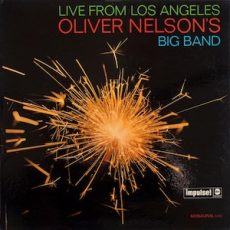
Requisites
Live From Los Angeles ~ Oliver Nelson’s Big Band | By Eddie Carter
Submitted for your approval this morning is a 1967 live album by Oliver Nelson’s Big Band, Live From Los Angeles (Impulse A-9153/AS-9153). It was recorded at Marty’s on The Hill over three nights during a six-day engagement. Oliver was a brilliant arranger, composer, and multi-instrumentalist. The band members are Bobby Bryant, Conte Candoli, Buddy Childers, and Freddy Hill on trumpet; Lou Blackburn, Billy Byers, Pete Myers, and Ernie Tack on trombone; Gabe Baltazar and Frank Strozier on alto saxophone; Bill Perkins and Tom Scott on tenor saxophone, Oliver Nelson on soprano saxophone, arranger and conductor, Jack Nimitz on baritone saxophone, Frank Strazzeri on piano, Mel Brown on guitar, Monty Budwig on bass, and Ed Thigpen on drums. My copy is the 1967 U.S. Mono release.
Side One opens with Miss Fine, an original by Oliver Nelson named in honor of his sister. The band begins at a medium beat, with their ensemble playing admirably tight during the opening and concluding chorus. Freddy Hill delivers a captivating performance in the song’s only interpretation, mesmerizing both the audience and the listener. Milestones by Miles Davis is a high-energy swinger from the start, setting a brisk pace for the big band’s theme. Frank Strozier bursts out of the gate quickly, followed by an intense exchange with Tom Scott. Tom takes flight last with a spirited performance leading to the final theme and ending.
Frank takes center stage in the next tune, I Remember Bird by Leonard Feather, a gentle ballad that begins with the saxophonist presenting the theme and its restatement while the band supports in the background. As the only soloist, he provides delicate softness in a gorgeous interpretation, preceding a beautiful conclusion. Night Train by Jimmy Forrest, Lewis Simpkins, and Oscar Washington is one of two tunes Oliver recorded with Jimmy Smith and Wes Montgomery a year earlier. The ensemble opens and closes similarly. Mel Brown is the featured soloist and serves a healthy portion of soul food for the ears until the band takes it out.
Oliver Nelson’s Guitar Blues gets Side Two underway, giving Mel another opportunity to shine. The band sets things in motion with a feisty melody, then Mel shows up and shows out in an outstanding performance, culminating in the theme’s reprise and a spirited finale. Down By The Riverside is an African-American spiritual that initially received a jazzy makeover from Jimmy, Wes, and Oliver on their collaborative album. After the band establishes the theme in this version, the driving force consists of four trumpeters: Bobby Bryant, Freddy Hill, Conte Candoli, and Buddy Childers, who take four successive solos that nearly bring the house down before the band wraps things up.
The band’s theme, Ja Da by Bob Carleton, brings the album to a gentle close. The slow-paced melody sets the mood for Lou Blackburn’s lone solo while the ensemble provides a warm and heartfelt backdrop. The trombonist’s performance creates a rich tapestry of sound, leading to an elegant theme restatement. Bob Thiele produced Live From Los Angeles, and Wally Heider was the recording engineer. The album’s sound quality is exceptional, immersing the listener in the big band’s performances and making you feel like you’re in the audience. The album adheres to Impulse’s high standards, featuring laminated gatefold covers, distinctive spine color, stunning photography, insightful liner notes, and outstanding music.
Oliver Nelson was also a master of the alto and tenor saxophones. Throughout his career, he arranged numerous albums for jazz and pop musicians and vocalists, showcasing a style combining traditional big band elements with modern jazz innovations. He also recorded for Argo, Flying Dutchman, Prestige, and Verve Records. After moving to the West Coast in 1967, Nelson became sought after for scoring background music for films and television shows. The jazz community deeply mourned his untimely death from a heart attack at the age of forty-three. If you’re in the mood for a terrific big-band live album, I recommend Oliver Nelson’s Big Band Live From Los Angeles the next time you’re record shopping. It’s a thrilling release that promises endless listening pleasure for jazz enthusiasts like me!
~ Jimmy & Wes: The Dynamic Duo (Verve Records V-8678/V6-8678) – Source: Discogs.com
~ Ja Da, Milestones, Night Train – Source: Wikipedia.org
© 2025 by Edward Thomas Carter
More Posts: choice,classic,collectible,collector,history,instrumental,jazz,music,saxophone


